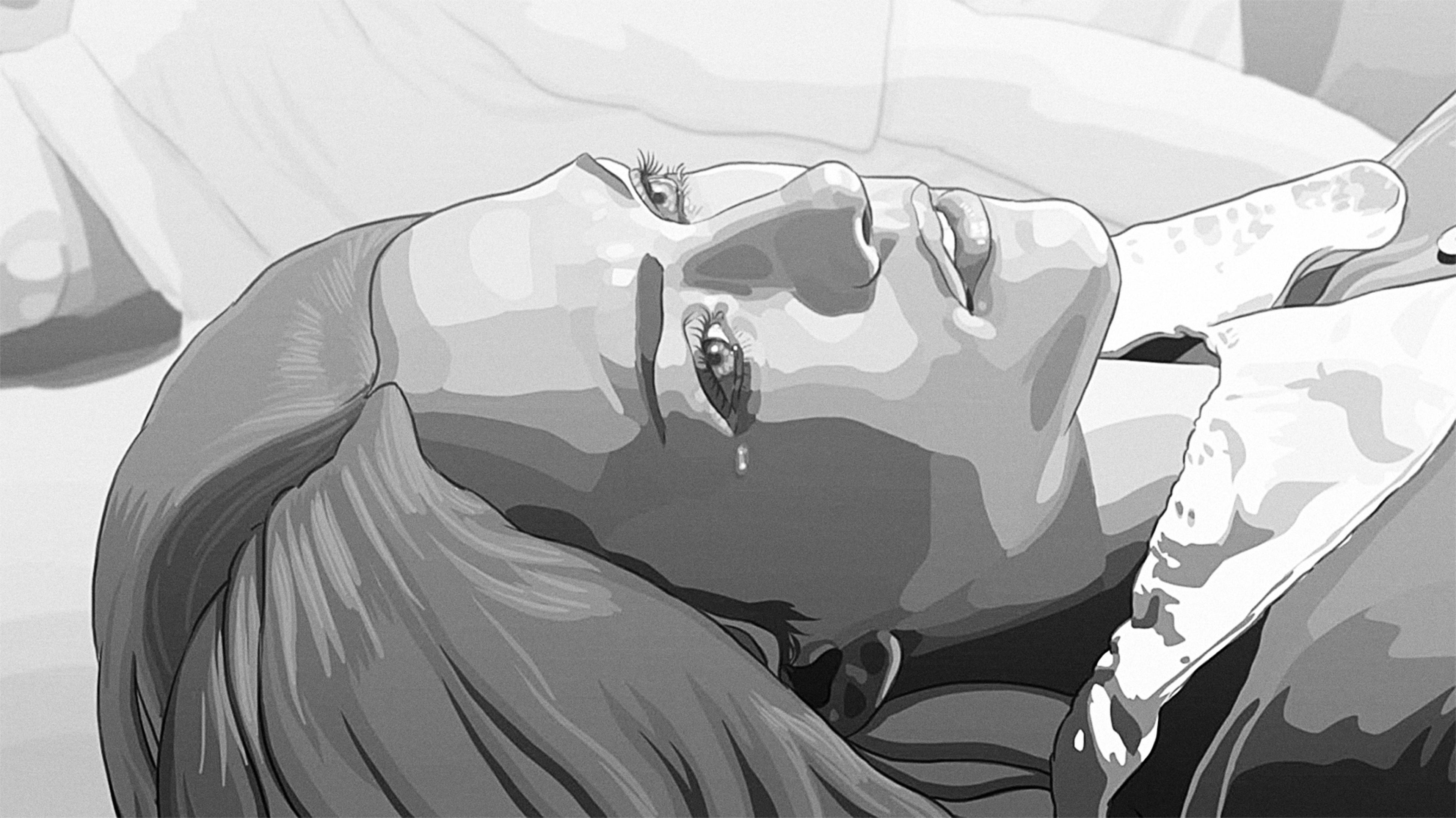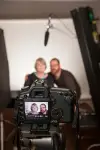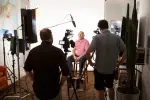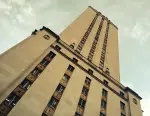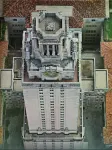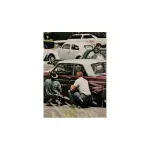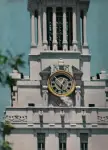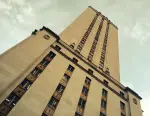When Austin-based filmmaker Keith Maitland decided to shoot a documentary dramatizing the 1966 University of Texas campus sniper massacre that left 14 dead, he faced two big problems. “I knew there was zero chance the university would allow me to film re-creations of people running around on campus with guns and students getting shot,” Maitland explains. The other problem: Maitland wanted to reach young audiences with his film. “If I did a more standard documentary where I talked to a bunch of 70-year-olds about what they’d experienced as 20-year-olds, it would be hard to engage high school and college kids who live under the threat of school shootings every time they sling a backpack over their shoulders and head off to class.”
Maitland came up an ingenious solution for Tower, which screens today at SXSW. He used rotoscope animation techniques, invented in 1917 by cartoon maestro Max Fleischman, to transform freshly shot live-action reenactments into an artfully constructed period piece evoking character, place, and time. “The amazing thing about rotoscoping is that it’s very malleable,” Maitland explains. “Unlike green screen, where the computer subtracts out the background, rotoscoping is an additive technology in that you don’t take anything away from the footage—you add layers on top of it. That meant I could film in any setting and have the background replaced by the animators.”

The upshot: Building on his interviews with real-life shooting survivors, Maitland assembled a young cast to portray wounded pregnant student Claire Wilson, civilian hero Allen Crum, cop Ramiro Martinez, and other witnesses, then filmed the actors performing prop-free re-creations of the carnage in his own backyard. “I have a pretty tall palm tree in the corner of my backyard, so for eyeline purposes that stood in for the tower,” says Maitland, who also used his iPhone and a Canon S100 camera to film a heartrending ambulance sequence on the grass. “I measured out a space in my backyard, set up a lounge chair, and laid the kid down on it. We found very detailed archival photos of the inside of an ambulance from that period to use for the interior, and on YouTube we found footage by a guy who’d restored his vintage ambulance and shot the car peeling out and making wide turns. We downloaded that video and gave it to the animators to create the ambulance exteriors.”
Reality-Based Animation
Maitland shipped his new video, along with archival photographs and reference shots he snapped on campus with his iPhone, to Minnow Mountain. There, animation director Craig Staggs, lead animator Aaron Sacco, and their team transformed Maitland’s backyard footage into a painterly version of the University of Texas campus as it existed in 1966.
Working with a French software program called TV Paint, artist-animators used stylus devices to paint the entire movie, 12 frames per second, on Wacom drawing tablets. “Our process is based on old-school, traditional, cel-and-paint animation workflows,” says Staggs. “The computer speeds this process up and helps organize assets, but it’s not like there’s an animation button. Our number one requirement is that our animators needed to draw very well. I’m very passionate about making a distinction between software-driven platforms versus the human, hand-drawn approach we took for Tower.
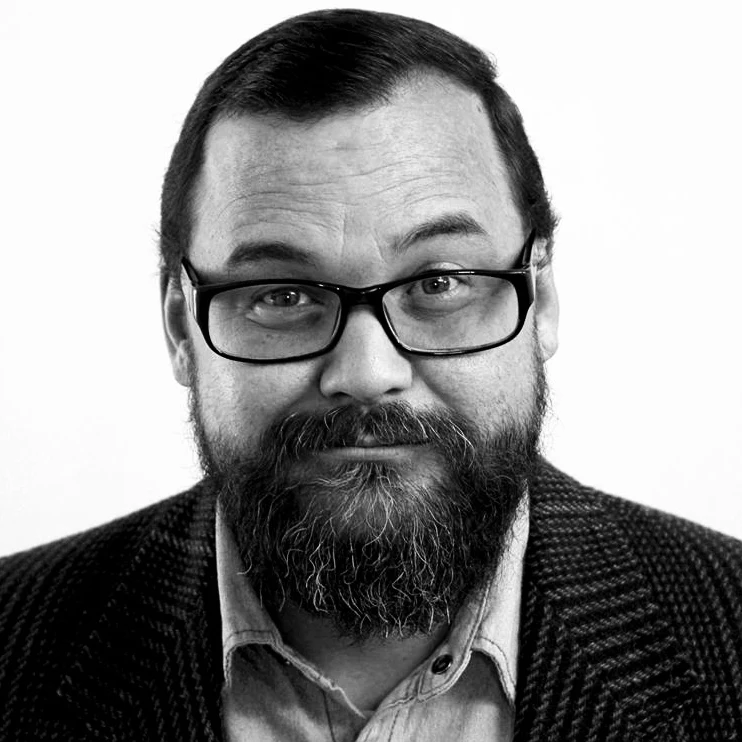
Describing the process, Staggs says, “Essentially we’re talking about layers of transparent video. The bottom layer is the reference video shot by [Maitland]. Above that, we build the animation starting with the key poses with the actor standing there with an expression. I’d usually draw these poses and hand over the file to an animator for breakdown frames leading into and out of the key poses. Then an assistant animators would take over and fill the frames in between. So in the end, you have a file with layers for lines, color, background art, and maybe special effects or vehicles.”
Staggs, who started out as a teenaged caricaturist and later produced illustrations for the New York Times before learning rotoscope technique on Richard Linklater’s A Scanner Darkly animation feature, cites an evocative cop sequence in Tower to explain how his team put its own spin on source video. “Early in the film we see police officer Houston McCoy standing in the shade of an overpass. The actor was shot at that actual location 50 years later, so we animated that scene over the video, allowing the texture of the ground to show through. The water laps on the same shore. The animation serves the moment, but at the same time we also tried to capture this kind of dreamy truth wherever possible.”
Rotoscoping The Emotions
Minnow Mountain also emulated motion blur, lens flare, and mood-altering effects to evoke a full cinematic experience. “This is a handheld animated movie, which is crazy,” Staggs says. “We decided to embrace the motion blur, so characters might warp over one frame, then snap back into place just like the video does. I learned to paint lens flare so I could interpret that when it showed up in the video.”
When called for, Staggs calibrated rotoscope techniques to achieve maximum emotional impact. Using footage of actress Violett Beane (later cast in HBO’s The Leftovers) lying on the grass in Maitland’s backyard as a starting point, Staggs morphed the material to show an agonized Claire Wilson sprawled on the baking hot campus sidewalk. “That shot had a hallucinatory visual effect that was achieved by a layering of filters and frame-by-frame painting. This layer was placed on top of the character animation and faded in as the figure comes into view. We wanted to portray the optical distortion of both the 100-degree heat, and we also wanted to capture [Wilson’s] mental state as she lay there severely wounded.”
Staggs and his team spent 18 months on Tower, working nights and weekends over second-hand Mac workstations before completing the project to Maitland’s specifications. The resulting documentary, which includes voice-over by the actors as they recite survivors’ verbatim interview transcripts, fuses fact and animated fancy in eerily effective fashion. Staggs says, “This is a story told through memory, but the actors’ performances and the spaces are coming from somewhere real. I hope that balance between dream, memory, and truth creates drama for the audience.”
Recognize your brand’s excellence by applying to this year’s Brands That Matter Awards before the early-rate deadline, May 3.
